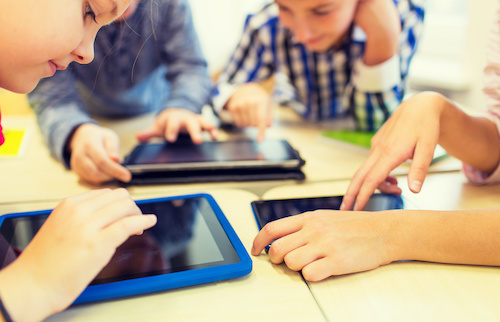Key points:
- Gamification can help engage students when they might otherwise lose motivation
- Engaged students are 2.5 times more likely to say that they get excellent grades and do well in school
- See related article: MDM solutions and gamification make perfect interactive learning partners
In the past decade, students have been inundated with more and more distractions. The internet provides an infinite amount of said distractions: YouTube, Instagram, and TikTok to name a few. While the environment that grows children into students–and eventually young adults–has been changing, the education system has proved less dynamic. There are ways to embrace these changes as a means of benefit to a child’s education instead of a burden.
Engagement is the name of the game here, and educators are losing. According to a 2022 Gallup poll, engaged students are 2.5 times more likely to say that they get excellent grades and do well in school. This is massive, but even more impressive is that they are 4.5 times more likely to be hopeful about the future than their actively disengaged peers. Students who are happy to come to school and who see it as an opportunity are bound to feel more self-agency and to be better prepared for their post-educational lives.
Gone are the days of teachers lecturing in front of students who are taking furious notes. Students can be too easily distracted to hang on most instructors’ every word. The more you treat education as a game, the more likely students are to pay attention and be engaged in class.
Many of the best educators use review tools like Kahoot, and Jeopardy! This allowed teachers to complete a module of lecture-based learning, generally a week of class, and imprint the knowledge into long-term memory via these tools. This leads to many downstream effects: better grades, superior retention, and interest in further education.
Gamification is one of the best ways to review previous coursework throughout the semester. In advanced placement (AP) courses, the end goal is to pass the placement test at the end of the year, but there is a lot of information on those exams. For example, the AP US History exam covers nine time periods of relatively dense information. Gamifying these materials with fun and engaging weekly review sessions is a great way to engage students.
Educators already use this concept with Reading Counts (RC) quizzes in elementary and middle schools. Nearly every school seems to have some sort of RC point-associated pizza party to incentivize individual reading. While this is a great way to motivate students, offering a pizza party once a semester is not a perfect model by any stretch of the imagination. Accruing points based on effort in learning is the basis for most grade point systems. However, as grade inflation continues, students seem to care less that they are not getting an A in the class, because it doesn’t mean as much. What does matter is having more RC points than your classmates or being on the winning Jeopardy! team on Friday’s review.
In our technologically rich culture, we have already found ways to gamify normally lackluster activities. Exercise is an obvious example. Apps like Strava allow you to share your runs with friends and actively see what other people are doing. The Apple Fitness app counts your steps and positively reinforces your activity by automatically setting goals. Even PokemonGo had massive impacts on normally immobile people to get up and move around. All these apps make exercise feel like a game. In drawing from these concepts, educators should determine ways to restructure instruction and to turn the classroom (and professional development) into a place for gamification, positive reinforcement, and rewards.
Even some of the basic facets of gaming used in badging programs and similar programs can help engage students and teachers to learn more. Artificial intelligence (AI) offers the potential to further enhance the gamification of K-12 education by creating immersive learning experiences. Virtual reality (VR) and augmented reality (AR) technologies powered by AI can transport students to virtual worlds where they can explore historical landmarks, conduct scientific experiments, or solve complex math problems in a gamified environment. These interactive simulations provide hands-on learning opportunities that promote active participation and deeper understanding of the subject matter. AI algorithms can analyze student interactions within these virtual environments, offering real-time feedback and guidance, thereby facilitating learning and encouraging self-reflection. Using both traditional and AI-supported gamification, teaching and learning can become a captivating and effective journey of discovery for students.
Gamification may have the potential to provide the level of engagement that Thomas Edison projected in the 1920s with the advent of instructional film. As educators have access to more robust technology, the instructor still needs to figure out how to best use it to engage each student.
Related:
Is it time to fire up gaming consoles in classrooms?
How to use Minecraft Education in your classroom
- 4 ways to encourage play in education - April 25, 2024
- CoSN IT Leader Spotlight: Lisa Higgins - April 25, 2024
- It’s time to pay student teachers - April 25, 2024

